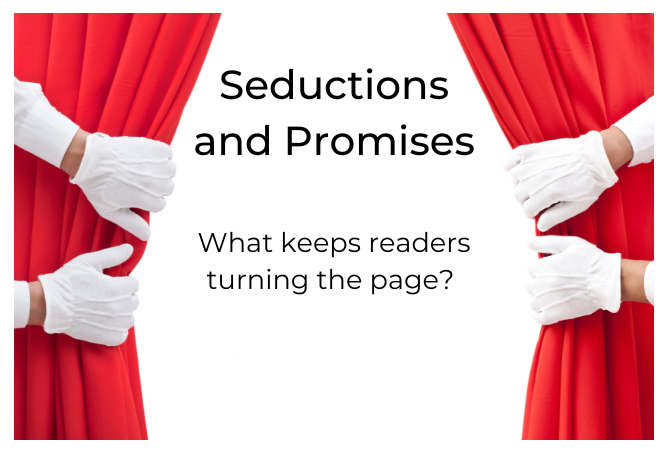Steadfast Stories: Protagonists without Change Arcs

In a steadfast arc, the character holds true to who he was in the beginning. Often when we think of characters arcs, we think of characters changing for the better: Scrooge giving up his miserly ways to show charity toward his follow men, Luke Skywalker choosing to trust in faith (the Force) to successfully hit […]
The 3 Types of Plot Goals

Stories start with a plot goal. While many writers point to conflict, or even the antagonist, as the first element of plot, in reality, it’s a goal that kicks plot off. You can’t have meaningful conflict, if there isn’t a plot goal in place. And at its heart, an antagonist is what is opposing the […]
Seductions and Promises – Writing Openings

The sweetest thing writers can hear is that our readers missed their bedtime because they couldn’t put our book down. The words on the page seduce the reader to continue flipping and it’s obvious this engagement begins at the story’s Writing Openings and continues. So the question I’m exploring today is what openings do we […]
A Checklist for Writing Your Story

Use this checklist for writing your story, and you will write even stronger stories. David Farland was a best-selling author and contest judge for the world’s largest short story competition. When I used to write for competitions, I would make lists of ways that judges might look at my work in order to grade it. […]
The Influence Character: One of the Most Important Roles

The Influence Character is one of the most important roles in your character cast. It is third only to the protagonist and antagonist. The term “Influence Character” originates from Dramatica Theory, and has since been used and adopted (and sometimes adapted) by others in the writing community. This is a role that has power based […]
Writing a Passive Protagonist?

Passive protagonists are often frowned upon in the writing world. They don’t influence the plot enough and make it harder for readers to get invested in them, and the story. Learn about passive protagonists and how to make them active. One of the most common pieces of writing advice given in regards to protagonists, is […]
4 Tips for Writing a Positive Relationship

Writing a relationship plotline is key for almost any story. Most narratives will feature a relationship that arcs positively through the book–whether the characters are love interests, friends, family members, allies, coworkers, or what have you. While it’s possible to highlight a negative relationship, audiences typically crave a meaningful one that brings the characters closer […]
Haunting Your Character with a Ghost (or Wound)

In storytelling, a character’s ghost is a past, significant (and often traumatic) event that shaped his worldview in a thematic way. It prepares the character arc and works as a motivator. Choose the appropriate ghost for your character and learn how to reveal it to the audience. It’s finally the month of Halloween! And if […]
Writing Powerful Scenes, Part 2: Beginning with Character

Historically, a “scene” was a set on a play. It consisted of the setting in which a dramatic exchange took place. It’s not a coincidence that “scene” and “seen” sound exactly alike. But as novelists, we don’t necessarily have the same kinds of “scenes” that occur in a play. A scene could, for example, consist […]
Understand and Implement Voice

In writing, voice happens at three levels: the author, the narrator, and the characters each have their own voices. While many editors and readers openly state they are hooked and reeled into a story by a strong voice, many writers struggle to understand let alone implement voice. Despite voice often being regarded as elusive, and […]


